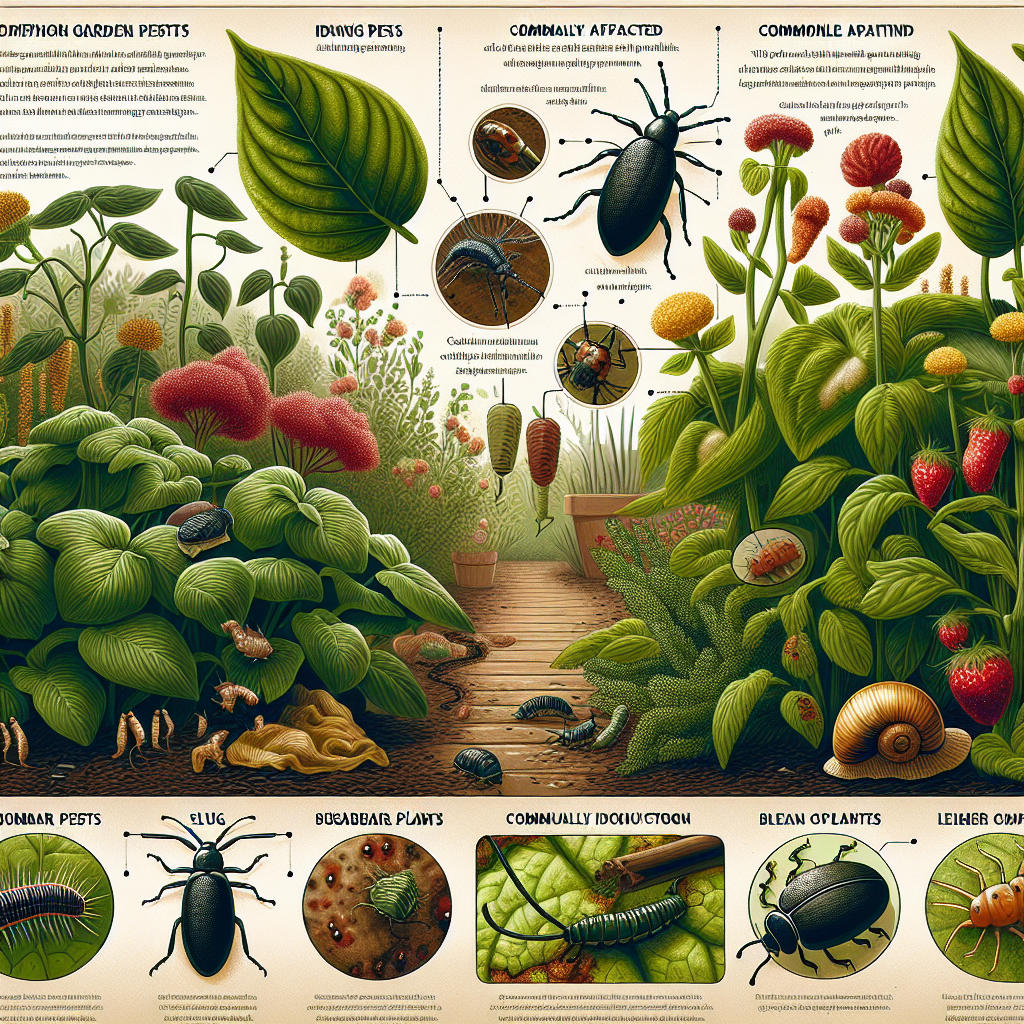Gardening can bring immense joy and satisfaction, but it often comes with its challenges, especially when it comes to pests. As a passionate gardener, it’s crucial to be aware of common garden pests, how to identify them, and understand their impact on your beloved plants. This article will guide you through the methods of identifying these nuisances and provide tips to manage them effectively, ensuring a thriving garden.
Understanding the Role of Pests in the Garden Ecosystem
Before diving into the specifics, it’s essential to recognize that not all pests are detrimental. Some insects play a vital role in pollination and pest control. However, when these pests become too numerous, they can cause significant harm to your plants. Thus, striking a balance in your garden ecosystem is key to maintaining healthy foliage.
Common Garden Pests and How to Identify Them
1. Aphids: The Tiny Green Invaders
Aphids are small, often green (but can be other colors) bugs that cluster on the undersides of leaves or around flower buds. They suck sap from your plants, weakening them over time. You might notice distorted leaves, yellowing, or even sticky residue (honeydew) on your plants.
Management Tips: Introduce ladybugs to your garden, as they are natural predators of aphids. Additionally, a strong jet of water can dislodge them without harming your plants.
2. Spider Mites: The Spinning Culprits
Spider mites thrive in warm, dry conditions and are often found on the underside of leaves, where they spin fine webs. You can identify them by the tiny yellow or white specks they leave on leaves, which may eventually fall off. Affected plants may start to yellow and show signs of distress.
Management Tips: Increase humidity in your garden. You can also wash the leaves with a mild soap solution or introduce predatory mites to keep their population in check.
3. Cabbage Worms: The Leaf-Munchers
Cabbage worms are the caterpillars of small white butterflies and can wreak havoc on cruciferous vegetables like cabbage and broccoli. They can be recognized by their green bodies and the damage they cause, often seen as hole-riddled leaves.
Management Tips: Hand-picking these pests can be effective, as well as using row covers to protect seedlings. You can also apply organic pesticides like Bacillus thuringiensis (Bt).
4. Slugs and Snails: The Sneaky Grazers
Slugs and snails love to feast on tender leafy greens. They leave behind a silvery trail and can be identified by their soft, elongated bodies with no shell (for slugs) and a spiral shell (for snails). Early signs include holes in leaves and an overall lack of vigor in your plants.
Management Tips: Use barriers like copper tape around plant beds, or create traps using stale beer. Natural predators, such as birds and toads, can help control their populations.
The Impact of Pests on Your Garden
Garden pests can significantly affect plant health, yield, and overall aesthetics. Here are some of the most common impacts:
Stunted Growth
When pests suck the sap from plants, they deprive them of the nutrients needed for growth, resulting in stunted development. This can lead to smaller yields and weak plants that are more susceptible to diseases.
Disease Transmission
Many pests can carry diseases from one plant to another, creating a cascade of problems in your garden. For example, aphids can transmit viruses that can devastate a crop.
Aesthetic Damage
Pests can cause unsightly damage that can ruin the beauty of your garden. Experience the heartbreak of seeing holes in your favorite blooms or yellowed leaves can be disheartening for any gardener.
Integrated Pest Management (IPM): A Holistic Approach
To effectively manage pests in your garden, consider adopting an Integrated Pest Management (IPM) approach. This involves monitoring plants regularly, employing cultural controls (like crop rotation and companion planting), and using biological controls (such as beneficial insects). Chemical alternatives should be a last resort and used sparingly to minimize harm to beneficial organisms.
Conclusion
Identifying and managing common garden pests is essential for maintaining a vibrant and healthy garden. By understanding the signs of infestation and employing effective management strategies, you can protect your plants and enjoy the bountiful rewards of your gardening endeavors.
Happy gardening, and may your plants flourish free from pests! Remember, a vigilant gardener is an empowered gardener, so keep learning and growing with your garden.


